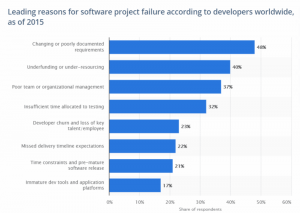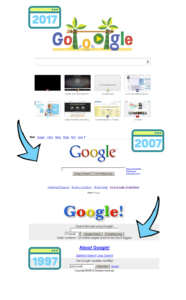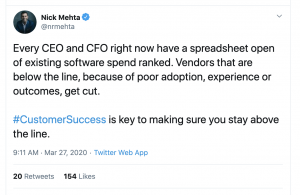— August 13, 2018
Planning for 2019 already? You’re in good company. Contracting a new contact center outsourcer may be one of the most impactful decisions you make all year (no pressure, right?) You’re putting your brand and your customers in the hands of someone new, whose efforts will have a direct impact on your business, its ROI, and all its related KPIs.
It’s the type of decision that is well-suited to a formal RFP and procurement process. Even if you’ve had the same supplier for a while, going through the contact center RFP process will ensure that you and your existing partner are staying up-to-date and competitive as the market evolves; after all, if your supplier grows stagnant, so do you.
If you’re the one in procurement, responsible for sourcing a partner, this is the guide for you. If, on the other hand, you’re the VP of Customer Care or Customer Experience, you can use this guide to ensure alignment between your vision and the tightly-organized process your procurement team will run. And it doesn’t have to be a painful process. Keep reading.
1. Identify Key Stakeholders
Even if your RFP process is driven by the procurement team, stakeholder involvement is essential. They’re the ones evaluating the responses and whom the decision will impact the most. Which leaders do you need to engage from the get-go? Although you want to avoid having too many cooks in the kitchen, collaboration is key.
Once you’ve identified your most important stakeholders, you need to work as a team to establish what the goals are in sourcing a new outsourcer. How will a new partner impact your business objectives, and how will you measure their success? Start with the end in mind. Furthermore, the team should agree on the budget as well as the process for evaluation and scoring of RFP responses (including deal-breaker criteria).
2. Shortlist Your RFP Participants
What companies are you inviting to participate in your RFP process? There are a couple of considerations here.
First, if you have the luxury of time, an RFI process that precedes the RFP will be highly valuable. Sending out a Request for Information to a broader pool of vendors allows you to solidify the basics, narrow the list of contenders, and proceed to the RFP process more confidently.
If time is of the essence but you do have the luxury of a larger budget, hiring a consultant to narrow down a list of participants is also a valuable tactic. They can build a pool of preliminary vendors that appear to match your basic requirements. Once that list is assembled, you don’t have to keep that consultant around for the rest of the process.
Finally, there’s the good ol’ fashioned approach of Googling. Search online for vendors and assess their websites for culture fit, suite of services and solutions, and self-reported strengths. This alone may give you enough insight to build a basic list of potential partners for your contact center RFP process.
Ultimately, the list you procure will determine how successful your RFP process is. Be careful about inviting too many companies to participate – if the pool is too crowded, you have your work cut out for you, and you’ll need to invest more time than you have or than is necessary, making the decision all the more difficult. On the flip side, too few participants may not accurately represent what the market has to offer.
3. Draft Your Contact Center RFP
Tempted to use a generic RFP template and bypass the headache of writing a new one? Don’t do it! Your RFP questions need to reflect the industry you’re focused on in order to get the most accurate view of your potential partners. If you need a head start, check out our exhaustive list of contact center RFP questions here. Additionally, this is where collaboration with your stakeholders is essential. They will each have specific questions they want to be answered that will impact how they evaluate vendors; just make sure you streamline any questions that get repetitive. Also, consider how your questions are phrased and whether they’re open-ended or require a yes/no or multiple-choice answer. Open-ended questions are great, but if you’re short on time for the evaluation process, make sure you enforce a maximum word count – otherwise, you’ll be faced with a 100-page long RFP response when one half the length would have sufficed.
Another consideration is the RFP format. Microsoft Word is great for lots of open-ended questions where you can really get a sense of a contact center’s communication style. Questions about culture, employee engagement, training and onboarding, and company history are great examples where Word is the best option. On the other hand, an Excel-style table format may be helpful to better organize – and later compare – questions and answers. Outside of those options, you may already have – or be considering – centralized procurement software. Tools like these may be enormously helpful in streamlining and comparing information. However, be aware of how these technologies may limit your creativity. Ensuring culture alignment between you and your contact center is critical, but discovering that alignment may require a more creative line of questioning than your procurement tool allows. If you do choose procurement software, just make sure you enable vendors to attach additional documents that can showcase any “out of the box” information.
Once you’re done drafting your RFP, get final approval from your stakeholders and get it sent out to your list of potential vendors! Establish a realistic timeline for these companies to review the RFP, ask follow up questions, and return a response. Providing too little time for a vendor’s leadership team to assemble thorough and accurate responses will risk the success of your entire process.
4. Evaluate RFP Responses
Company stakeholders and the procurement team should work collaboratively to score and evaluate RFP responses. Identify any deal-breakers as well as the differentiators and strengths of each individual vendor. RFP response evaluation can be difficult; it’s rarely an apples-to-apples comparison, even on hard numbers like pricing or metrics. Establishing some kind of quantitative scoring to measure qualitative answers seems counterintuitive but it’s necessary – at least as the first step – in order to make sure everyone is on the same page in the evaluation process. Sometimes you’ll have a clear winner; other times you may have to work by process of elimination until you’re confident in your decision.
Putting Together Your Contact Center RFP
On paper, it sounds straightforward, but we know better than anyone how complex the contact center RFP process can get. But we want to make it as easy for you as possible. Hopefully this guide helps a little, but we’d love to share more insight, so don’t hesitate to reach out today.
Once your RFP is ready to go, let us know! We can’t wait to deliver exceptional service to your customers.
Business & Finance Articles on Business 2 Community
(37)
Report Post







